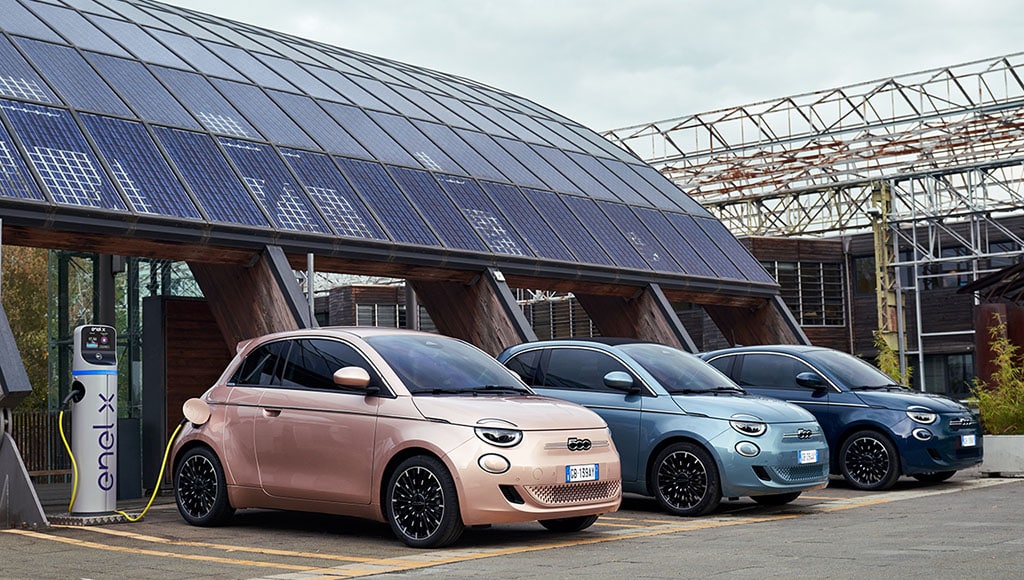The reality of electric mobility is not as pretty as the EU and national governments want us to believe. And the facts are there for all to see.
There is so much news coming out every week regarding problems with the electric car market that it’s important from time to time to stop and pay some attention. After all, this is the future we are being sold.
First and foremost, the EU has announced it will increase import tax on Chinese electric cars up to 38%, as it seeks to give European manufactures a chance to compete. This follows President Biden’s initiative of quadruplicating the same taxes in the US by up to 100% for the same reasons. It seems electric cars are as good for the environment as they are for globalization.
In Italy, Fiat had an incredible plan to go all-electric by 2030. For a constructor who builds mainly small city cars, that should have been a plan easier to implement than for most other brands.
The first electric model to kickstart this revolution would be the most important, obviously. And so, back in 2020, Fiat launched the 500e, an all-new, all-electric 500 to make the transition of the iconic name from combustion engines to electricity. The 500e is, in my opinion, not only the most beautiful electric car on sale today, but actually a very good car – one that makes perfect sense for city dwellers with a fashion sense.
The 500e is, fundamentally, a good idea well executed. And you know what? It’s not selling well. Not in the numbers Fiat need it to sell to justify its existence beyond a marketing exercise.
Why? Well, it’s pretty obvious. Because electric cars are not the solution politicians desperately wanted them to be and there are not many reasons for a private buyer to buy one apart from fiscal benefits or free city parking. In post-Second World War times, manufacturers sold the idea of the individual car as a synonym for freedom: go anywhere, anytime, whenever you feel like it.
It turns out the electric car is not exactly that, is it? Go anywhere, anytime…provided the public charger is working and there is no line at the charging station. If it won’t save the planet either, what’s the point?

Since politicians started meddling in things they don’t understand, manufacturers were forced to start rolling out electric cars as if they had no other choice. And they committed to an electric future they are now starting to admit will not come as soon as planned.
Car makers need, unsurprisingly, to sell cars. And, in order to do that, they need to have cars in showrooms people actually want to buy. Thus, Fiat have decided to do what needs to be done: build another new Fiat 500 that runs on fuel, to replace the existing one launched 17 years ago, that will be sold alongside the 500e.
Fiat are, therefore, retro-engineering the 500e’s platform to be able to implement a hybrid powertrain on it. It is going to be called the 500 Ibrida and should reach the market sometime between late 2025 and early 2026.
I can see more brands assuming they still need ICE cars in the near future. Toyota, Mazda and Subaru have just announced they will bet on alternate fuel technology instead of on an all-electric future only. Visionaries? Not exactly. It’s really just plain common sense.
Moving on. Stateside comes a report from Sherwood News saying Tesla have so many unsold cars in massive lots they can be seen from space. Last quarter, Tesla produced 433,371 cars but found just 386,810 customers. That means a current inventory of around 47,000 cars from a manufacturer who has also let go 10% of its workforce so far this year. That’s 14,000 people. And a sign the honeymoon period is over for Elon’s automotive enterprise, who will now abide by the same market rules as everyone else.
As for Panasonic, one of the world’s largest EV battery suppliers, the company revealed they were clawing back their expansion plans due to waning EV demand. The Japanese were on target to achieve 4x the capacity and 3x the revenue goals by 2030 but are now saying that, although those targets will be met, setting a date is no longer important. They also claim production intended for North America, despite President Biden’s best efforts to boost the national electric car market, may be diverted to Japan, where demand for small BEV city cars will likely grow faster.
Last, but definitely not least, there are some worrying numbers coming out of Germany. Worrying if you are on the EV selling business, of course. New EV registrations have fallen 30.6% in May when compared to the same month last year. The end of government incentives in December has, logically, taken its toll, removing the number one reason why people buy electric cars.
Overall, Q1 results were already down 14.1%, but the trend is becoming more pronounced as the year advances. On the other hand, petrol-powered sales grew by 2.1% and diesel 3.2%. Turns out people want what’s better for them. Who would have thought?
There is still time for politicians to assume their mistake and let the market work on market rules. Because that will happen one way or the other and those who keep trying to deny it will look ever more ridiculous. There is no infrastructure, and the technology is not advanced enough for widespread electric car take-up. Surely this is becoming all too obvious with each passing day.





















